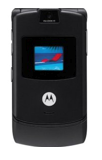

The previous article, The iPod Phone Myth, took apart the idea that mobile phones, and in particular smartphones, are a threat to Apple's iPod. Will that change in the near future? How much overlap is there between mobile phones and music players? Here’s why mobile phones and music players are not the obvious match many analysts are describing.
Why mobile phones make bad music players
Mobile phones and iPods have reversed business models, and each is engineered to accomplish opposing tasks. Considering the following, and try to identify what complementary features a mobile phone music player hybrid would offer consumers.
-
•store and organize a large library of songs or video using a hard drive (30-60 GB);
-
•play back high quality, stereo audio to headphones or external speakers;
-
•work continuously for hours of music or video playback using a relatively large battery;
-
•sync with a desktop computer for music and video content (using 480 Mbits/sec USB 2.0);
-
•be sold at a hardware profit. Related services, such as iTunes and the ITMS, are either free or involve minimal profit.
Mobile phones are designed to:
-
•play and record voice-quality, mono sound using tiny built-in speakers or a bluetooth headset;
-
•remain in standby mode, and only operate the cellular and bluetooth transmitters for short intervals during a call;
-
•sync with a slow cell network provider for voice, data, photos, or text messaging (tomorrow’s 3G networks promise 3 Mbits/sec; todays' “fast data” networks are 60-250 kbits/sec)
-
•be a free or highly subsidized unit, paid for by network service fees sold under contract.
Wow, no complementary feature overlap at all! So what happens when we add iPod features to a mobile phone?
Mobile Phones Gone Bad
Things that make a mobile phone attractive are small size, light weight, bluetooth headset features, long battery life, and low cost.
A mobile phone with iPod quality sound would be bigger and heavier, because it would require more storage and a larger battery to support continuous operation (an iPod's weight and volume come mainly from its hard drive and battery). A standard phone would also need more expensive audio circuits to support good audio quality, making the unit even more expensive. 

Bluetooth doesn't work well for listening to music, because the technology is tuned to voice grade quality and is prone to dropouts, which are far more irritating while listening to a song than in a conversation. Continuous operation of bluetooth would also hog the battery.
Phones that already deliver limited audio playback features, such as the Palm Treo or WinCE style PDA phones, make a poor iPod replacement because they can't store many songs and are more complex to operate. They try to accomplish everything by not doing anything really well. Even so, many PDA features are very complementary with using a phone; audio playback simply isn't.
Who will subsidize them?
Phones that try to deliver iPod features become less attractive not only to consumers, but to the mobile phone service providers, who make their money from network fees. In their ideal scenario, consumers would send each other pictures and buy ring tones, songs, and even video clips over their network. Some providers even disable existing phone features, such as bluetooth syncing, to force customers to use their network.
If the mobile phone becomes more like an iPod, users will simply sync their phones with their computer and email their camera phone photos to friends, and will similarly choose to obtain ring tones and songs over their existing, faster, cheaper Internet connection. Just paying to stream a high quality song over the cell phone network to a phone is more expensive than buying the song!
Apple's first foray into mobile phones was to partner with Motorola to provide iTunes syncing and iTMS song playback on Motorola's ROKR (and later RAZR) phone. Sure enough, network providers weren't pleased with the phone, but neither were customers.
Based on sales numbers, it is pretty clear that consumers preferred buying their choice of music player and their choice of phone over having the equivalent of an iPod Shuffle built into just two phone options. Choice is good!
If mobile phones simply make bad music players, can Apple turn their music player into a good phone?
Next Article:
This Series
Put RoughlyDrafted Magazine on your Dashboard and be the first to see the latest articles! I appreciate blog links, social networking postings such as deli.cio.us, and reddit.com, and readers who share articles via emails or newsgroups. Thanks!

| | Comment Preview
 Read more about:
Read more about:

 Send |
Send |

 Subscribe |
Subscribe |
 Del.icio.us |
Del.icio.us |
 Digg |
Digg |
 Furl |
Furl |
 Reddit |
Reddit |
 Technorati
Technorati
Click one of the links above to display related articles on this page.
Why Mobile Phones Make Bad iPods
Wednesday, June 28, 2006















